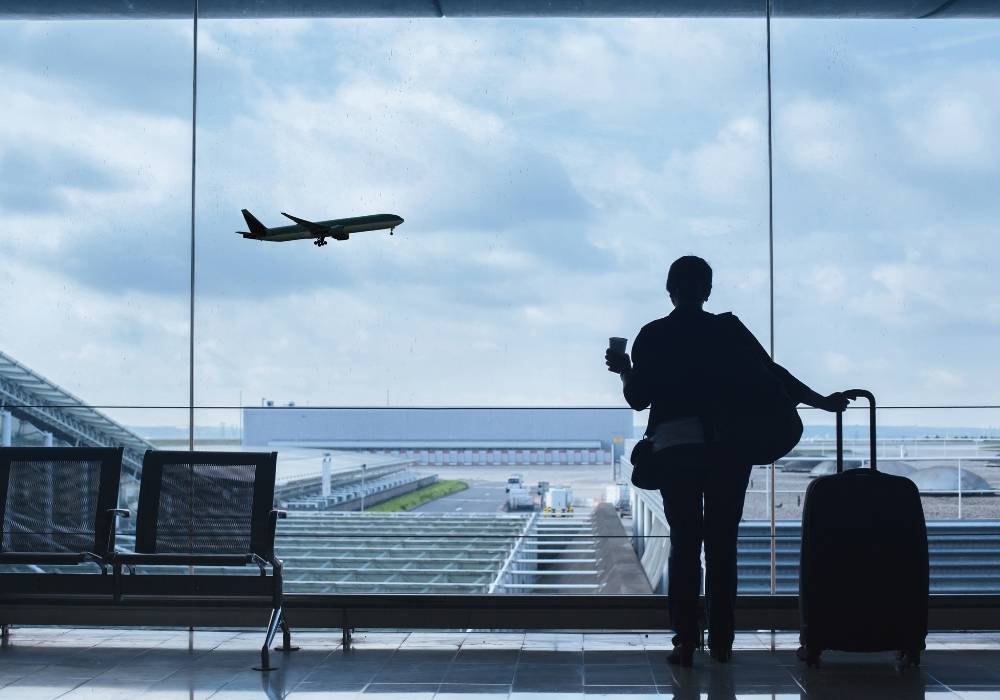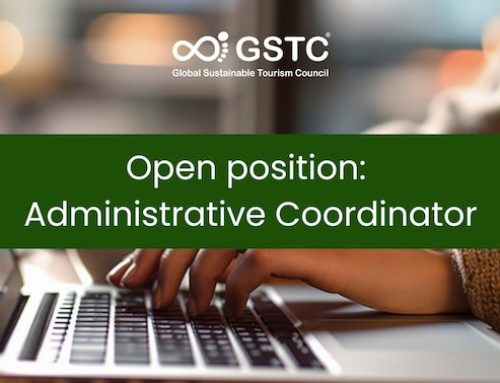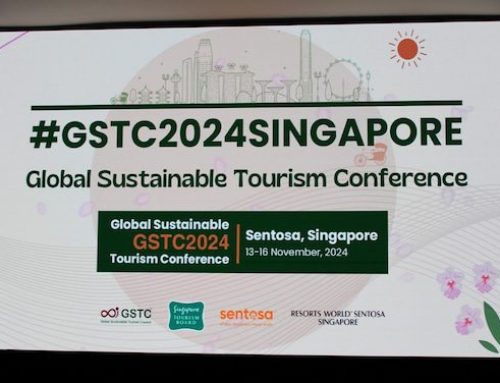Can We Certify Our Way to Sustainable Travel?
Article written by Sun Woo Baik in Asparagus Magazine

Sustainable-travel certifications to the rescue, right? Not quite. Behold: the overwhelming number of certifications available globally. The sheer volume of schemes can leave would-be sustainable travelers confused, frustrated, and wary. This problem has spurred recent efforts by big industry players to simplify matters. One such initiative is Travalyst, a coalition founded in 2019 by Prince Harry, which is bringing together companies from Booking.com to Google and Visa to make sustainable travel “mainstream.”
If there’s a laundry list of certifications available for every possible trip, how do you narrow it down to one? Which ones are even trustworthy? And what actually goes into certifying a hotel, tour, or destination as “sustainable”?
The Global Sustainable Tourism Council (GSTC) was formed to bring some order to this complexity by setting baseline criteria for sustainability in tourism. But it’s been a bumpy road, thanks to an industry that’s fragmented, unprepared, and in some cases unwilling to buy in.
What is the GSTC, and how is it funded?
The GSTC is a non-profit organization formed in 2010 from a merger of two previous groups: the Sustainable Tourism Stewardship Council (founded in 2009), and the Partnership for Global Sustainable Tourism Criteria, which was formed in 2007 by the UN Environment Programme, the UN Foundation, the UN World Tourism Organization, and the Rainforest Alliance.
The GSTC maintains the GSTC Criteria, which, according to the organization’s website, “serve as the global standards for sustainability in travel and tourism” and are “the result of a worldwide effort to develop a common language about sustainability in tourism.” These criteria are meant to be followed by groups establishing sustainable-travel certification schemes of different kinds.
In theory, the GSTC is funded by a mix of donations, sponsorships, and membership fees from organizations (like tour operators, tourism agencies, and certification bodies), along with revenue from running summits, trade events, and training programs for individuals and companies. In reality, though, donations and sponsorships are “negligible,” writes GSTC CEO Randy Durband in an email. The organization “hasn’t received meaningful financial support since 2012,” and most revenue now comes from training, events, and memberships.
Recognition, accreditation, certification
There are two sets of GSTC Criteria: Industry Criteria for organizations that certify hotels or tour operators, and Destination Criteria for programs that certify cities, regions, and national parks. Both sets contain four broad categories: sustainable management, socio-economic benefits to local communities, cultural-heritage protection, and environmental sustainability. The specifics within these categories vary depending on which set of criteria you’re looking at, but common threads include having robust monitoring and reporting systems, supporting local business, protecting sensitive environments, and managing tourists’ interactions with wildlife.
Tourism groups that have developed their own sustainable-travel standards (like Ottawa-based Green Key Global’s Eco-Rating) can submit them to the GSTC for recognition. The GSTC’s independent Assurance Panel (consisting mostly of industry consultants focusing on sustainability) reviews them. If they deem a group’s standard equivalent to the GSTC’s own criteria, the panel designates it “GSTC-Recognized.” This designation is for the standard itself, not the organization that submitted it. When assessing any standard for recognition, the GSTC “looks ONLY at the words in a standard,” writes Durband. Currently, the GSTC lists 43 total recognized standards.
Accreditation, on the other hand, looks at the process that certification bodies use to certify businesses and destinations. A “certification body” is an organization that certifies hotels, tour operators, or destinations based on one or more recognized sustainability standard(s). The GSTC doesn’t do any certifying itself. Instead, it accredits a certification body—such as Netherlands-based Green Destinations—and that body in turn certifies hotels or other tourism businesses.
Like all credible sustainability certifiers, the GSTC doesn’t accredit in-house: that process is conducted by a third party—Germany-based Assurance Services International (ASI)—to reduce the risk of conflicts of interest. According to Durband, ASI takes at least a year to look beyond the words in a standard and examine the procedures that the body being accredited uses to certify businesses or destinations with its standard(s). To be accredited, a body needs to prove that the process whereby it certifies businesses or destinations uses “transparent and impartial certification procedures, and auditors who are technically competent in sustainable tourism.” To date, only six certification bodies have been accredited: Bureau Veritas, Control Union, UCSL, Vireo, EarthCheck, and Green Destinations.
Certification by one of these bodies is where the GSTC’s criteria finally reach the consumer. In the same way you’d look for a Fair Trade mark on your coffee beans, you can look for, say, a Green Destinations Certified mark on your chosen destination package.
A bumpy road
A key challenge the GSTC has faced is that travelers do want more sustainable products and services, according to Durband, but they don’t ask for them when they are shopping for hotels, flights, and travel packages. At that point, they’re focused on price. “This leads many businesses to conclude that travelers don’t care about sustainability, which is not the case,” he writes.
Meanwhile, for some tourism businesses—especially small ones—a lack of demand isn’t the only thing preventing them from getting certified and implementing sustainable standards; it’s a lack of resources. For family-owned guest houses in Japan, known as minshuku, certification presents a real financial burden, says Dr. Kumi Kato, a professor in the Faculty of Tourism at Wakayama University, and a member of the GSTC’s board of directors.
Kato says that sustainable tourism became a priority for the Japan Tourism Agency (JTA) after it started focusing on travel as a way to revitalize the economy. With population decline throwing rural Japan into economic hardship, tourism was seen as a way to boost these communities. But while the JTA kept promoting travel to these areas, local communities were unprepared for the influx of travelers and suffered from overtourism.
In 2019, to address some of those impacts, the JTA formed a committee to develop a sustainable-travel standard that could be applied throughout Japan. Kato served as the committee’s chair, and they chose the GSTC Destinations Criteria as their starting point. But in order for the standard to make any sense for small businesses like minshuku, Kato says they needed to translate the broad policy guidelines of the criteria into specific questions such as “Do you have rules about recycling? Do you have good appliances? Do you use renewable energy? Do you compost?”
Kato adds that while she has seen certifying bodies work closely with their clients to provide useful information, she has also seen instances where certification looks more like an extractive business. “Some places will say ‘Okay, you’ve achieved bronze. Next, silver. Next, gold.’ And then it gets more and more expensive [for the client].”
What’s missing? Accountability
Dr. Harold Goodwin—a professor emeritus at Manchester Metropolitan University and founder of the UK-based Responsible Tourism Partnership—says that certifications can actually hinder effective communication between certifier, hotel, and traveler.
“If you’ve got a problem,” Goodwin says, “the hotel will tell you ‘Well, we didn’t certify the hotel, this certification company did.’ But you’ve got no case against the certification company, since you have no contract with them. So you can’t get compensation.” In Goodwin’s experience, it’s common for certified hotels to still have energy-wasting practices, such as providing extra key cards to leave in the room’s electricity card slot while you’re out, so the air conditioning stays on and keeps the room cool.
For him, certification needs to build in an additional element of accountability to ensure that it truly indicates sustainable practices. Instead of being left to trust certification, travelers should be able to easily find out how much water, power, or other resources a hotel uses, and weigh their accommodations options with that information. “I don’t know anywhere in the world you can find that out,” Goodwin says. “It’s about taking responsibility. It’s about what you do, rather than what you say you do.”
The GSTC’s aims make sense. By creating a universal baseline for sustainability, they’ve established something to check the industry against. “Certification doesn’t happen without a standard,” Durband writes. Without organizations like the GSTC, there wouldn’t be a starting point to assess, much less improve, how planet-friendly the tourism industry is. But the mammoth task of verifying that the GSTC’s criteria lead to more sustainable travel options currently falls to a handful of accredited certifiers. So for now, it remains very hard for travelers to take advantage of the GSTC’s criteria to plan sustainable travel.
Article written by Sun Woo Baik in Asparagus Magazine: Can We Certify Our Way to Sustainable Travel? (October 20, 2022)




